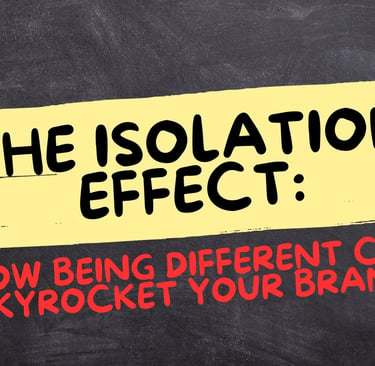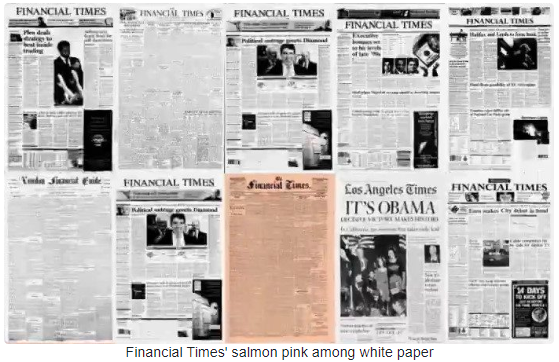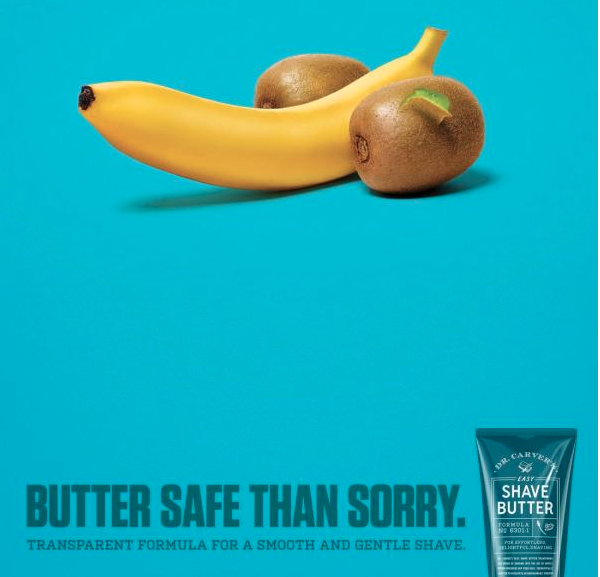💡 The Isolation Effect: How Being Different Can Skyrocket Your Brand!


Did you know that one bold decision made over a century ago transformed the fate of the Financial Times? Here's a fascinating story about creativity, boldness, and the power of standing out.
📰 The Problem: In 1892, the Financial Times was in deep trouble. Despite having superior content that provided insights into economic trends, their sales were lagging. Competing with a giant like Financial News was no easy task, and they were on the verge of shutting down.
So, what changed everything?
💡 The Pink Paper Idea
One day, an editor noticed something at a newsstand. Among the sea of white newspapers, finding the Financial Times was like spotting a needle in a haystack. That sparked an idea: “What if we made our paper a different color?”
🔍 After considering their options, they chose salmon pink—an affordable and unbleached paper. Some thought the idea was crazy. But desperate times call for bold moves, and they went for it.
🎉 The Result?
The Financial Times stood out on newsstands.
Readers instantly associated the pink paper with its unique insights.
Sales skyrocketed, and the pink color became their iconic identity.
💡 Key Lesson: Standing out is not just about what you do but how you present yourself.
🧠 The Isolation Effect
The success of the Financial Times is a textbook case of the Isolation Effect—a psychological principle discovered by German psychiatrist Hedwig von Restorff in 1933.
Here’s how it works: Imagine a shopping list where everything is written in black except for one item in red. Which one will you remember? Exactly—the red one.
This principle proves that distinct visuals, tone, and messaging are more memorable. For brands, this is a game-changer.
🚀 3 Tips to Make Your Brand Distinctive
1️⃣ Break Free from the Default Every industry has its clichés:
Financial services? Navy blue for trust.
B2B brands? Formal tone of voice.
But blending in means losing out. Instead, analyze what your competitors are doing—and do the opposite.
"Learn the rules like a pro, so you can break them like an artist." — Picasso
2️⃣ Be Bold Boldness grabs attention. Look at these examples:
Cadbury’s Gorilla Ad: A drumming gorilla transformed public perception and boosted sales.
The Economist Campaigns: Clever, distinct messaging that makes you think (and remember).
💥 Bold ideas may feel risky, but fortune favors the bold.
3️⃣ Differentiate + Distinctiveness Having a unique product or service isn’t enough. People need to see and feel that difference.
💡 Example:
Dollar Shave Club disrupted the razor market with cheap subscriptions (differentiation) and humorous ads (distinctiveness).
Result? Acquired for $1 billion.
🤔 Ask Yourself:
Does your brand’s tone of voice stand out?
Does your messaging make people stop scrolling?
Are you memorable in a crowded market?
💡 Distinctiveness isn’t optional—it’s your ticket to success.
🔔 Follow for More: Don't miss out on future articles packed with practical tips and inspiring ideas.
Visit my website Kamaleonte Marketing.
Subscribe to my newsletter AI Sapiens.
Stay informed, stay adaptable, and keep thriving!




